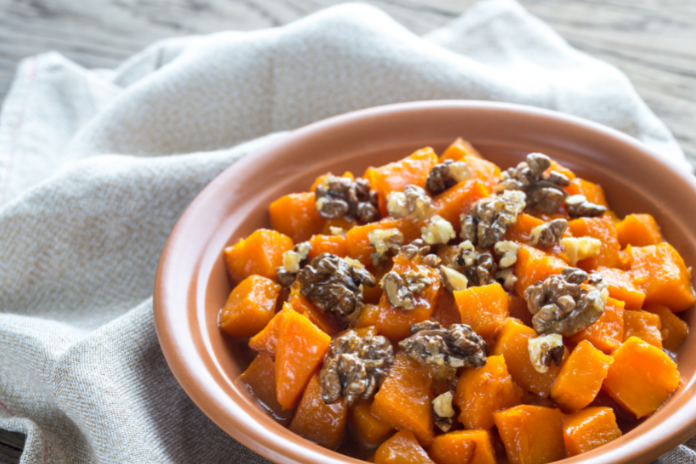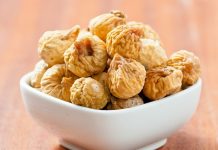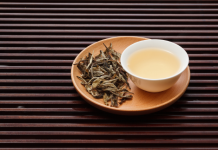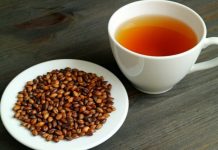Squash is a genus of the flowering plant in the gourd family. It is an edible species that is usually served as a cooked vegetable. Along with the plant, the seeds and the blossoms may also be cooked and eaten. Squashes are of many different types ranging from summer squashes to winter squashes.
The summer squashes include zucchini, pattypan, globe squash, crookneck, and cousa squash. These types of plants grow quickly, are small-fruited, and spread up to 45 to 75 cm. Summer squashes produce a wide diversity of fruits that have distinctive shapes. Such as flattened, elongated, crooked, and colored, ranging from cream to yellow, green, and variegated.
In This Article:
Talking about the winter squashes, these include butternut squash, acorn, delicata, buttercup squashes, and giant pumpkins. These long-seasoned plants can be stored for months if kept in dry and above freezing conditions. The fruits come in the diverse form of shapes, sizes, and colors.
Nutrition
One of the most prominent types of squash is the yellow squash which falls under the purview of summer squashes. This type of squash has numerous health benefits. It is a rich source of Vitamin A, potassium, fiber, magnesium, phosphorus, and vitamin B6 and C. It is said to hold the highest nutritional value. Being rich in manganese helps in boosting bone strength and increases the body’s ability to process carbs and fats. Yellow squash can be grilled, pureed, roasted as it is completely edible.
9 Health Benefits Of Squash Vegetable For Kids
Calcium Source
Zucchini is one of the most calcium-concentrated plants among all the other squashes. Being rich in calcium helps in developing strong teeth. It also helps in the development of strong bone density. One other function carried out by zucchini is that it transports the nutrients within the body.
Immune System
Courgettes contain vitamin c. The immune system’s development depends on the content of vitamin C present in the body. It is necessary for the production of mucus and other important bodily fluids.
Vitamin B
Vitamin B is a complex of folate, vitamin B6, thiamine, niacin, and few other compounds. Squash is a source of vitamin B as it helps in boosting the metabolism levels of children. It also influences the production of energy in the body and regulates the production of RBCs.
Brain Development
Yellow squash and zucchini are both fruits that contain high phosphorous compounds. Phosphorous plays a major role in facilitating bodily functions. It helps in fighting fatigue and numbness. One of its major roles is that it promotes proper and optimum development of the brain.
Digestion
Packed with minerals and vitamins, squash makes digestion very easy for children. The reason behind it is that it is densely concentrated with water and fibers. Zucchini is one of the best remedies to solve issues of digestion in children.
Anthelmintic Properties
Butternut squash which is a type of winter squash carries anthelmintic properties. Which means settling worms in the intestine. This is a common issue seen in children. Butternut squash can be used as a remedy against this. Research suggests that it can significantly reduce the settled worms in the intestine if given on daily basis.
Eyesight
The presence of vitamin A and beta carotene in butternut squash is said to promote eyesight. It is considered to improve eyesight in children. The beta carotene present in the squash also helps in protecting the eye from UV radiations.
Antioxidant
Squash acts as a very effective antioxidant because of its high water concentration. This antioxidant helps in protecting the body from free radical activities. These free radicals can damage the cells. This damaging of cells can be protected by antioxidants.
Magnesium
Yellow squash highly contains magnesium which is helpful to the children in many ways. Magnesium helps in the development of gums, bones, and teeth. It also aids digestion by stimulating the enzymes which are required for proper digestion. It is also said to control the urinary bladder.
Healthy Squash Recipes
Zucchini is one of the most commonly known squash is thoroughly enjoyed by children. It could either be used in the form of pasta or could be served as a soup. There are many variations available on the internet easily. Here are three healthy yet enjoyable recipes with the main ingredient as zucchini.
Zucchini soup
A nutritious meal to be served to the kids when they’re sick.
Ingredients
- One medium-sized potato
- Medium-sized onion
- One medium-sized zucchini
- One clove of garlic
- 5 cups vegetable stock
- Olive oil
- Tablespoon of yogurt
Preparation Process
Sauté chopped garlic and onion till they turn tender. Chop the potato into small pieces and add it to the pan. Cook the potatoes on low flame for 15 minutes. Then add the cubed zucchinis to the pan and cook for 5 minutes more. Add the vegetable stock and let it boil. Lastly, stir it in the yogurt and serve.
Zucchini pasta
To eat healthy and tasty all at once.
Ingredients
- 1-2 medium-sized zucchini
- Adequate amount of olive oil
- One cup pasta
- Pepper and salt
- Bell peppers
- Cheese
Preparation Process
Start by boiling the zucchini in one pot and by boiling the pasta in another pot. Boil the zucchini until it becomes soft. After that, drain the water from the pasta and add some olive oil to it to prevent it from sticking. Now add the boiled zucchini to the pasta and mix it thoroughly. Now sprinkle pepper and salt according to your preference of taste. Lastly, garnish it with cheese and bell peppers.
Roasted Zucchini squash
Preparing a wholesome meal with minimal use of oil.
Ingredients
- 3 medium-sized zucchinis
- Olive oil
- Small onion
- Smoked paprika
Preparation Process
Chop the zucchinis and onions and put adequate paprika over the cubes. Then put in some olive oil. Roast the cubes for 30 minutes at 400 degrees in the oven. Then let them cool down at room temperature. Lastly, blend the cubes in a mixture and they’re ready to be served.
Sources:
- https://foodrevolution.org/blog/health-benefits-of-squash/
- https://www.healthychildren.org/English/healthy-living/nutrition/Pages/How-to-Get-Your-Child-to-Eat-More-Fruits-and-Veggies.aspx













